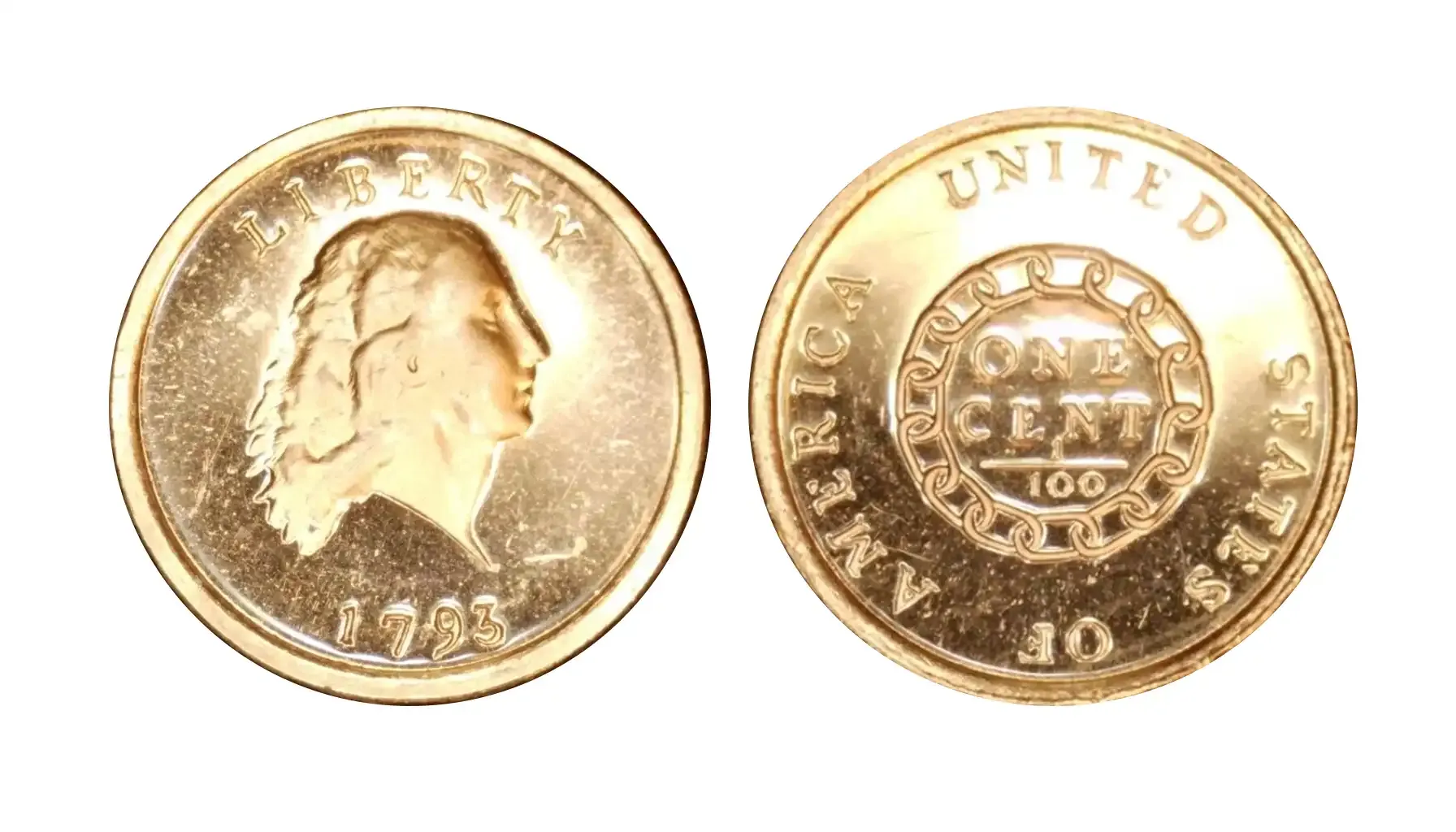Contents:
Nowadays, in the epoch of digital prosperity, hardly do people think about money as a physical representation of their wealth, especially in countries like the US where digitalization is fast and drastic. Since assets are stored on credit/debit cards and deposits, the concept of money as banknotes and coins persistently fades away, though its collecting aspect is never missed.
Among the rarest yet frequently overlooked coins in American numismatic history is a 1/2 cent coin (as well as two cent coins, by the way). With a rich background and significant influence on the modern collecting industry, half a cent coins have become a target to obtain and collect. So, what does this coin mean, how much does it cost, and which iterations should we look for?
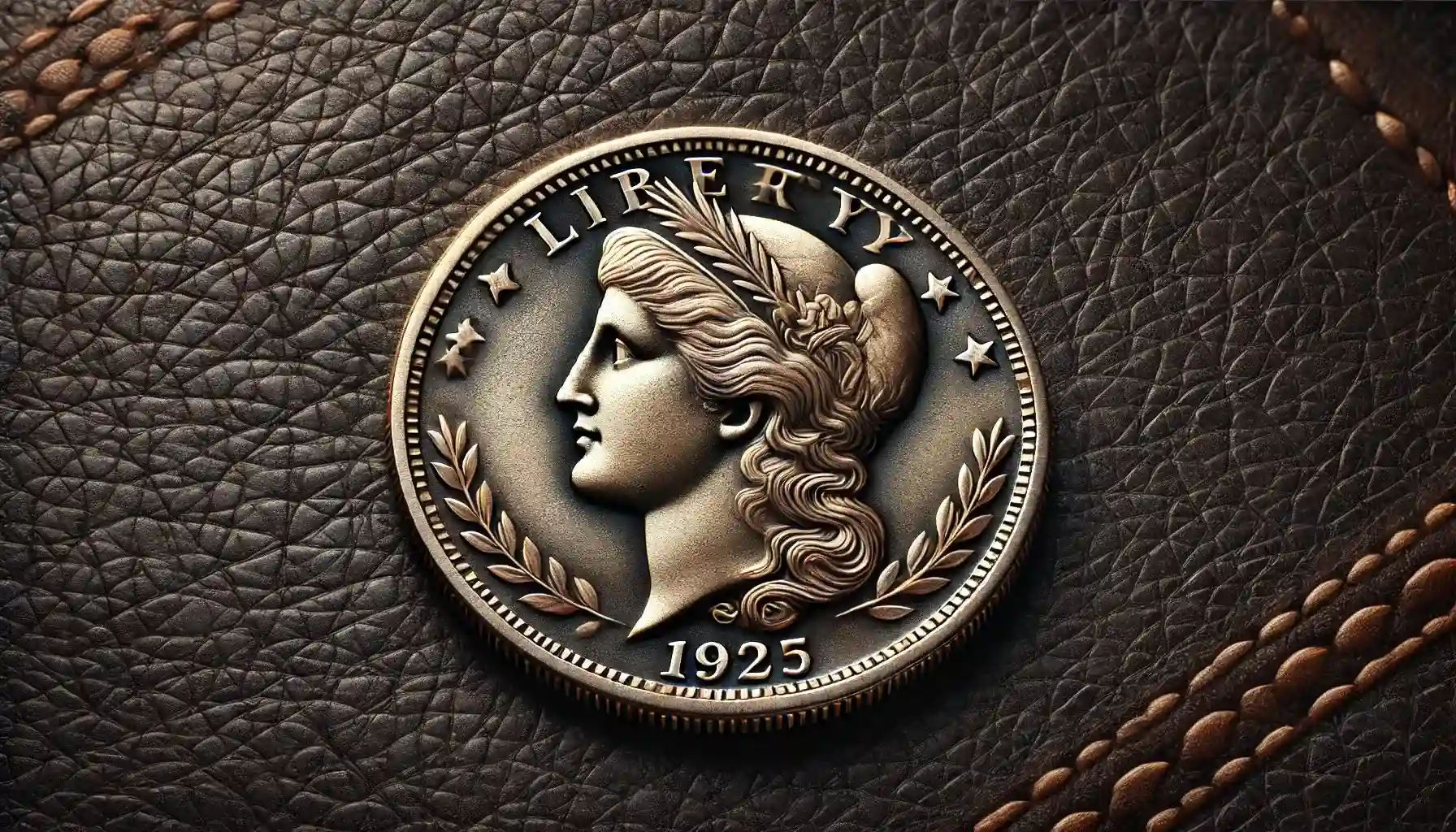
What Is a 1/2C?
A half cent (1/2C), also commonly referred to as a half cent penny*, is the smallest denomination minted in the US. In fact, the life of this coin was rather long, for the release of the half cents took place in 1793 and this lasted for 64 years, until the Coinage Act of 1857.
*It is important to distinguish between half cents and pennies. A penny is a general term used to refer to a one-cent coin, while half cents represent a smaller unit of currency (half the value of a penny, which is obvious).
Historical Background
Back then, in the XVIII century, the half cent was born out of necessity to establish a profound financial system in the country that was yet to become a leader in the international economic arena. Representing a breakthrough in the development of the country, the Coinage Act of 1792 authorized the minting of several coins, including the silver dollar, copper cent, and the hero of our material, i.e., the half cent itself.

For almost 64 years in a row, it was an overly significant unit of currency thanks to its frequent use and convenience. Nevertheless, thanks to occasional economic fluctuations (e.g., inflation), the production of the coin was irregular and it gradually lost its usability. By the 1850th, it was no longer practical to pay by half cents, which inevitably led to the withdrawal of coins in the end.
The Main Characteristics of a Half Cent
Though the coin has an extensive history with numerous designs having been developed over decades, the appearance did not really change. So as to know what type of coin is present, it is sensible to explore some distinctive features for one not to fall into the trap of counterfeiting.
Denomination and Value | The half cent equaled 1/200th of a dollar (half a cent). |
Composition | Pure copper |
Diameter | 23.5 millimeters (bigger than a penny) |
Weight | 5.44 grams |
Minting Locations | Philadelphia |
Edge Variations | Lettered/reeded/plain edges |
Production Period | 1793 to 1875 |
Collectability | The rarest instances are the half cents 1793 and 1796 (low mintage numbers and historical background). |
Designs | It depends. |
Design Varieties
1/2C Liberty Cap (1793-1797)
The Liberty Cap is probably one of the most prominent examples of this coin, as it was introduced in 1793 with an indicative design (though the design underwent slight alterations within a few years). The coin’s obverse portrayed a profile of Liberty facing left/right with a Phrygian cap on a pole behind her, yet the reverse featured a wreath and inscriptions like “HALF CENT” and “1/200”. The beauty is in simplicity.
1/2C Draped Bust (1800-1808)
The second version was released in 1800. Robert Scot, the designer of this coin, strived to develop a more classical yet sophisticated representation of Liberty with a bust draped in fabric (as it could have been portrayed in Ancient Greece or Rome). The reverse side, though, was not different. However, the rarest options might include the bald or heraldic eagle but these iterations did not have a large production.
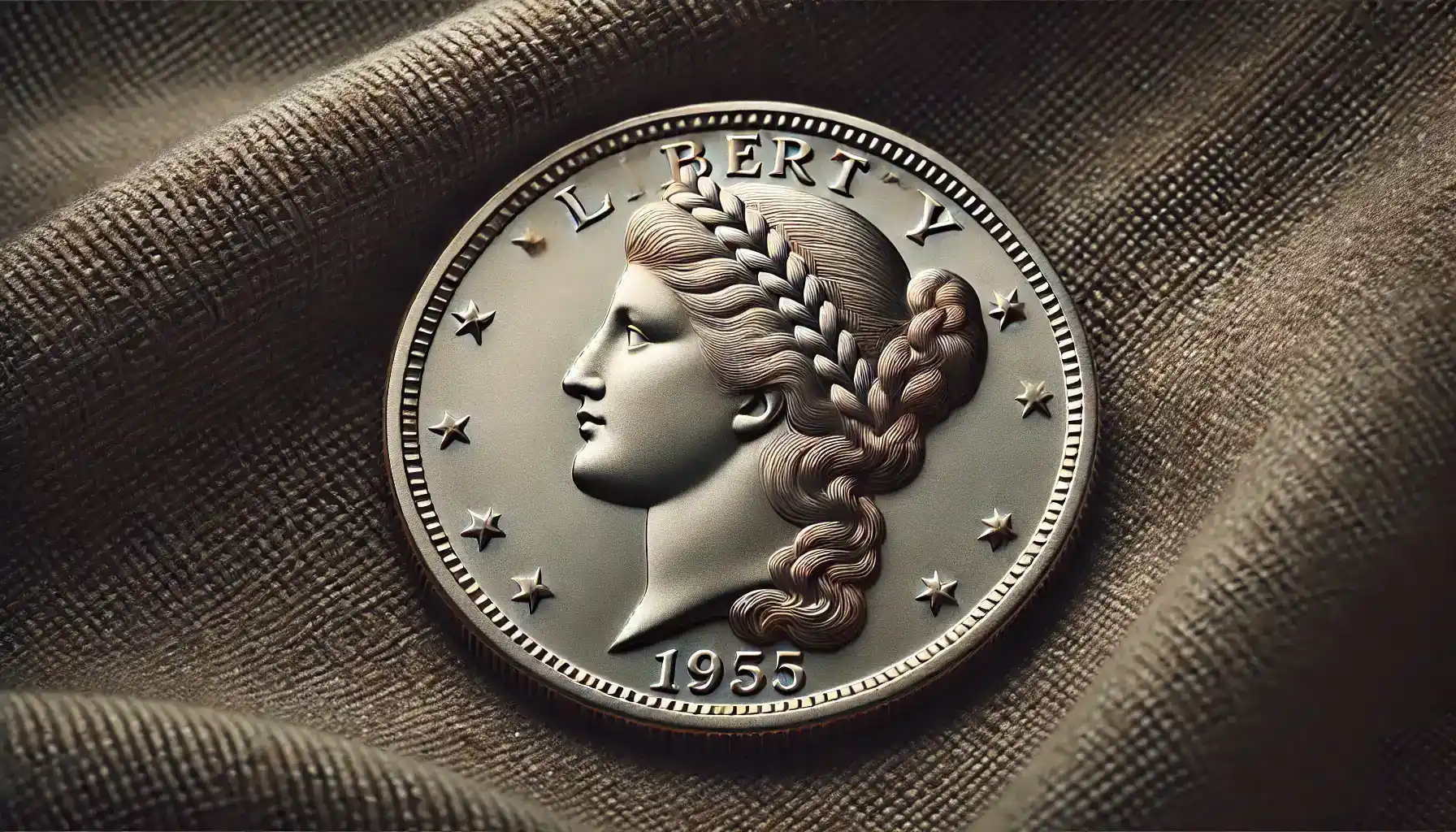
1/2C Classic Head (1809-1836)
Soon after, in 1809, there was introduced the classic head design that demonstrated Liberty in the simplified form with her loose curly hair on the obverse side and the same wreath on the other. Nonetheless, due to relatively high levels of mintage and even a hiatus, the classic head half cent coins are among the most accessible collectibles on the market these days.
1/2C Braided Head (1840-1857)
Last but not least, the final design of the half cents was exceptionally well-adapted with a more mature Liberty depicted in the obverse and the similar reverse (again). What is unusual about this portrait is the profile of Liberty and her hair which were tied up into a sophisticated hairstyle.
Related article: Lincoln Head Cents.
Top 10 American Half Cent Coins for Sale
The market is full of various options to look for. However, it is vital to distinguish which pieces are more valuable and significant in terms of their investment potential. Let us take a look at some of the half cent values and certain instances that were sold at the GreatCollections auction platform recently.
1796 Liberty Cap 1/2C
Winning bid: $270,000
Grade: MS-64+ RB
The 1796 Liberty Cap 1/2C is one of the earliest US coins, featuring the iconic Liberty Cap design, which makes it one of the most sought-after coins in early American numismatics.

1828 Classic 1/2C
Winning bid: $33,300
Grade: MS-65 RB
The 1828 Classic Head 1/2C is known for its smooth, sharp design, with Liberty's profile and its distinctive reddish-brown color.
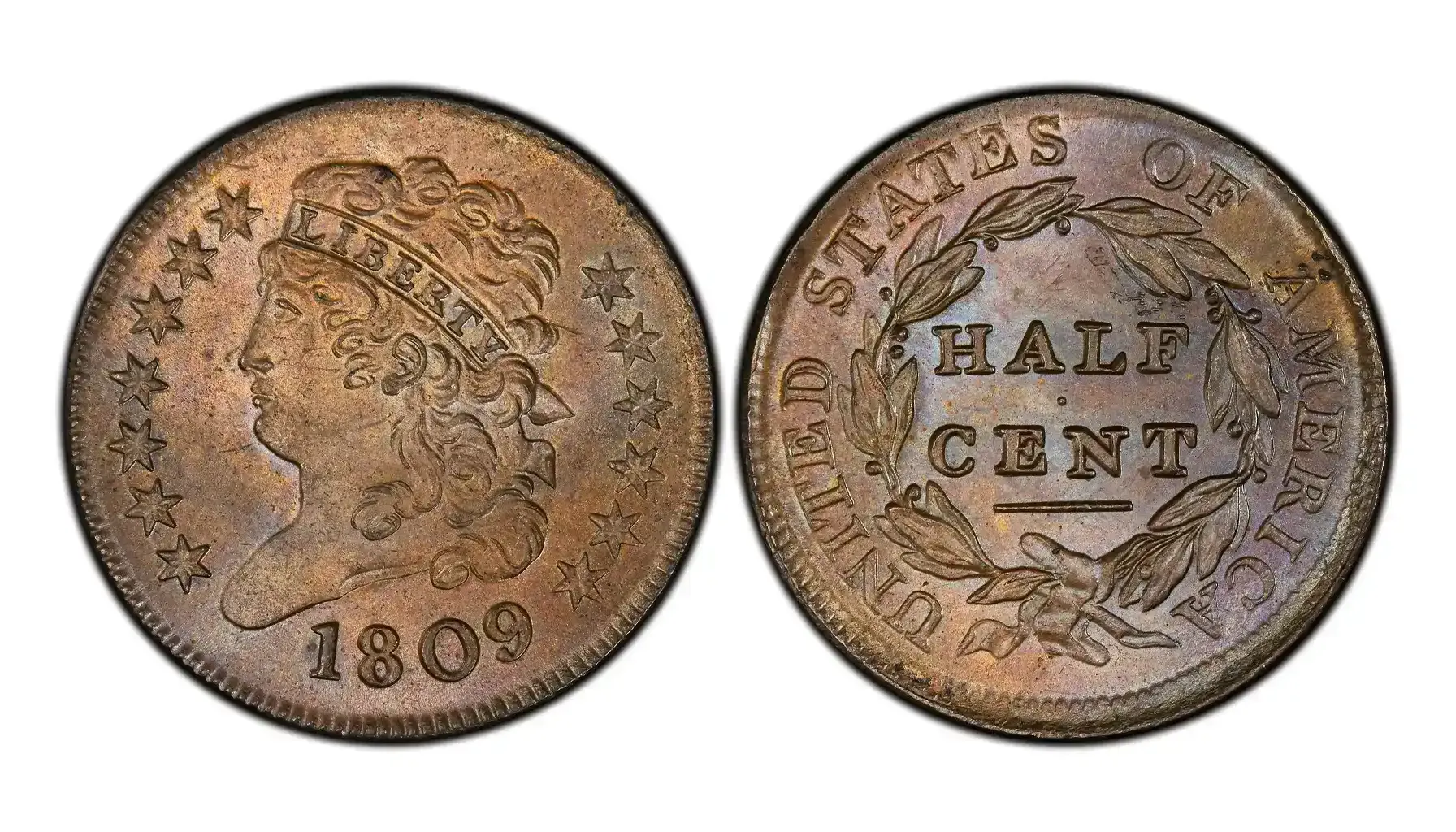
1831 Classic 1/2C
Winning bid: $27,778
Grade: XF-45 BN
The 1831 Classic Head 1/2C features a beautifully detailed portrait of Liberty and is part of a short-lived but important series, i.e., a favorite among collectors of early copper coins.
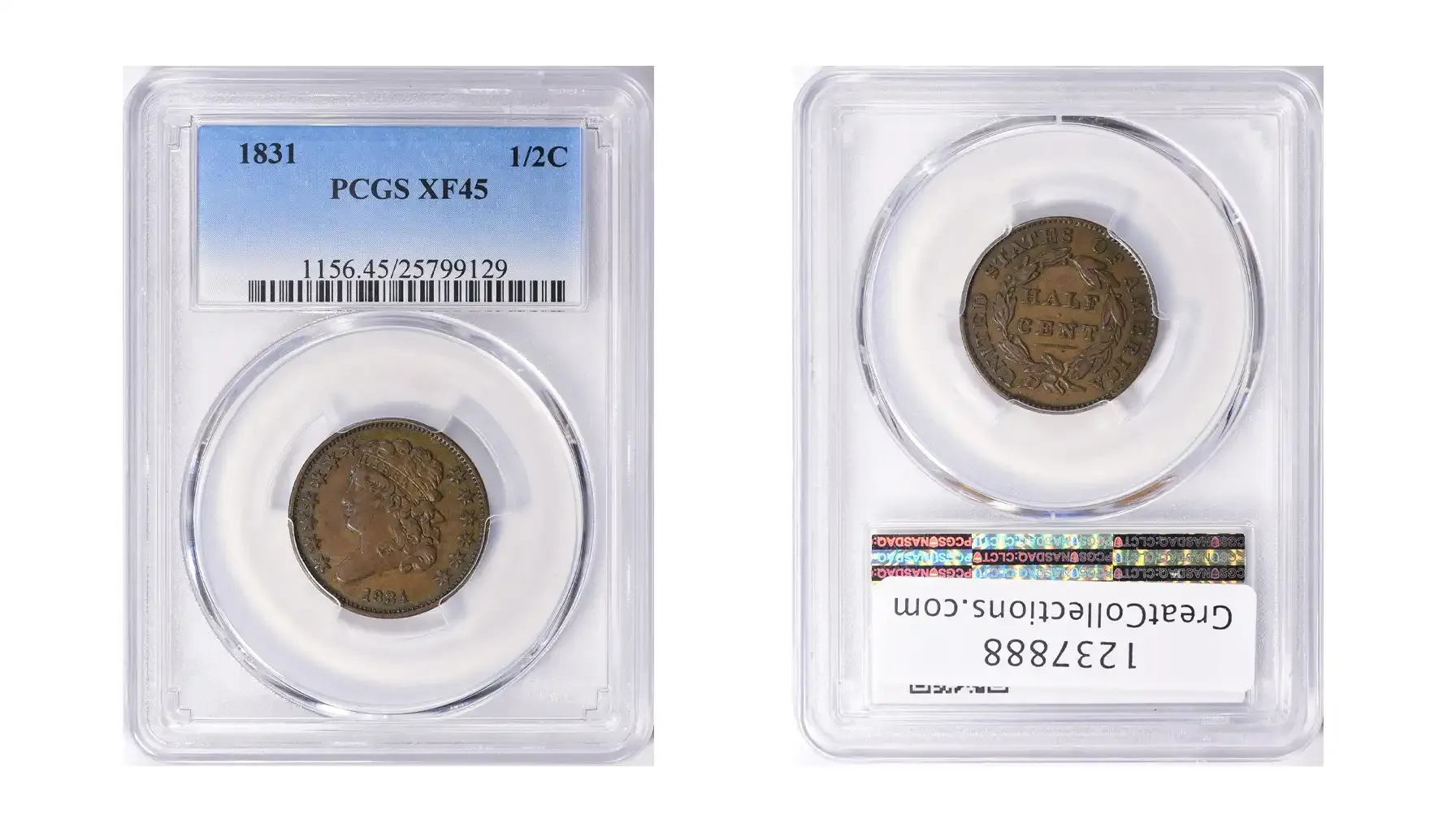
1833 Classic 1/2C
Winning bid: $12,500
Grade: MS-66 RB
The 1833 Classic Head 1/2C features sharp details and a powerful portrait of Liberty, framed by stars and an elegant border with the central place in the series of Classic Head half cents.

1845 Braided Hair 1/2C Restrike
Winning bid: $11,617
Grade: Proof-67 BN
The 1845 Braided Hair 1/2C restrike is a beautifully detailed proof coin with a distinct, glossy brown finish. Ideal for those who are focused on early American copper coins.
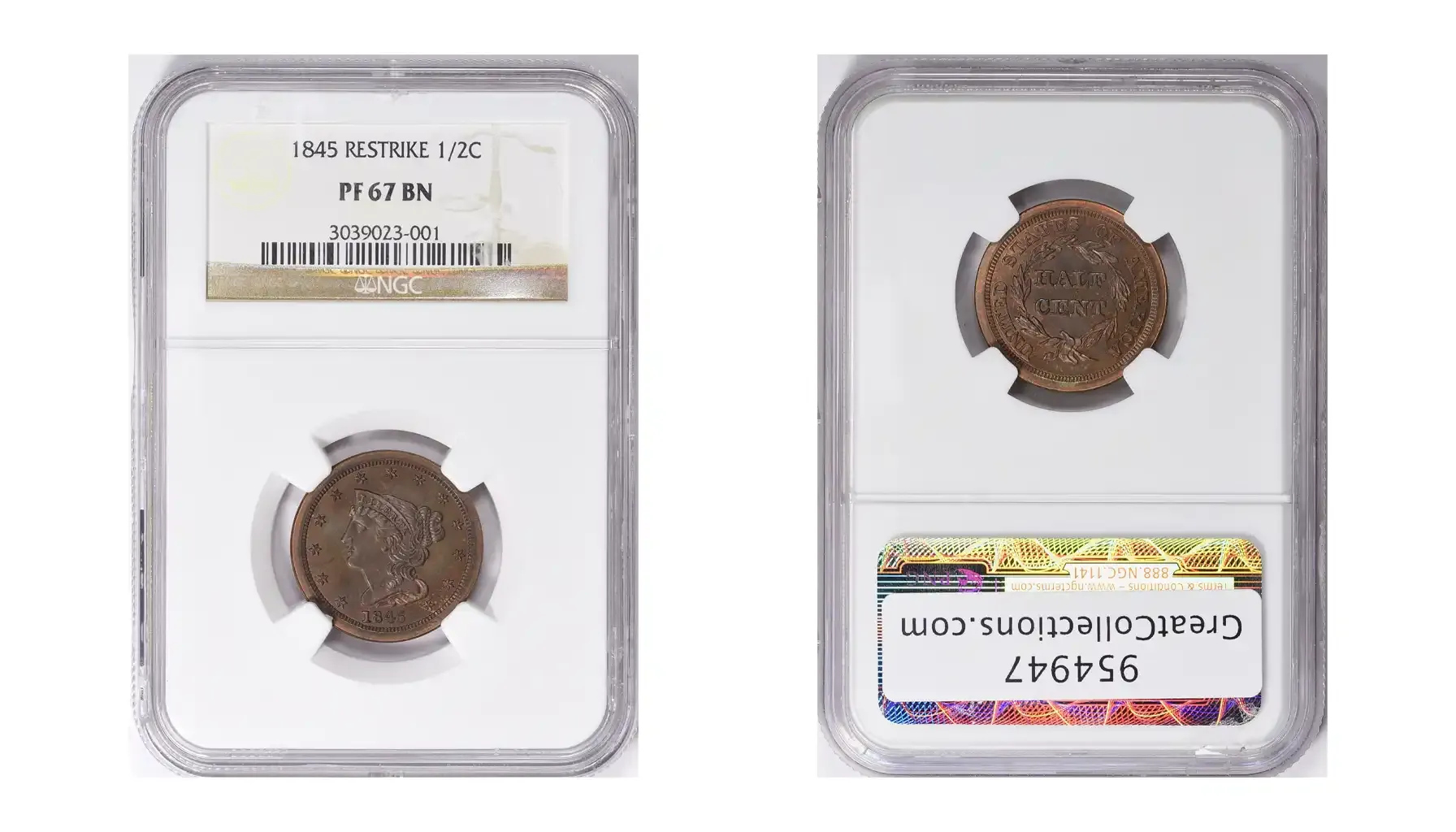
1806 Draped Bust 1/2C
Winning bid: $5,305
Grade: MS-63+
The 1806 Draped Bust 1/2Cis known for its elegant design, featuring Liberty with flowing hair and a draped bust. Its timeless beauty and historical significance make it a highly coveted coin among collectors, and the GreatCollections auction platform shows it vividly.
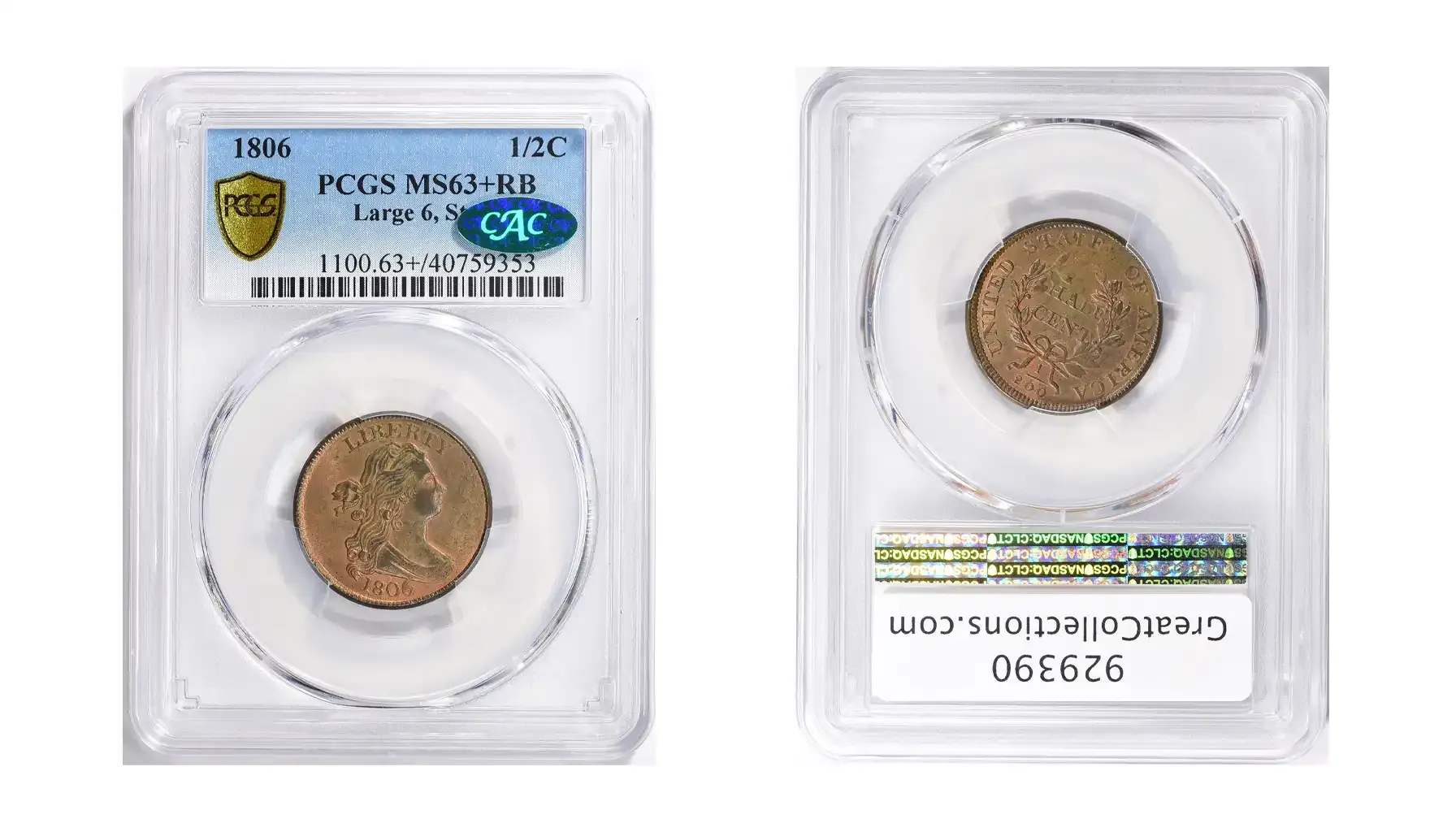
1853 Braided Hair 1/2C
Winning bid: $5,250
Grade: MS-66+ RB
With a bold design and deep reddish-brown patina, the 1853 Braided Hair 1/2C is an example of fine craftsmanship from the mid-19th century.
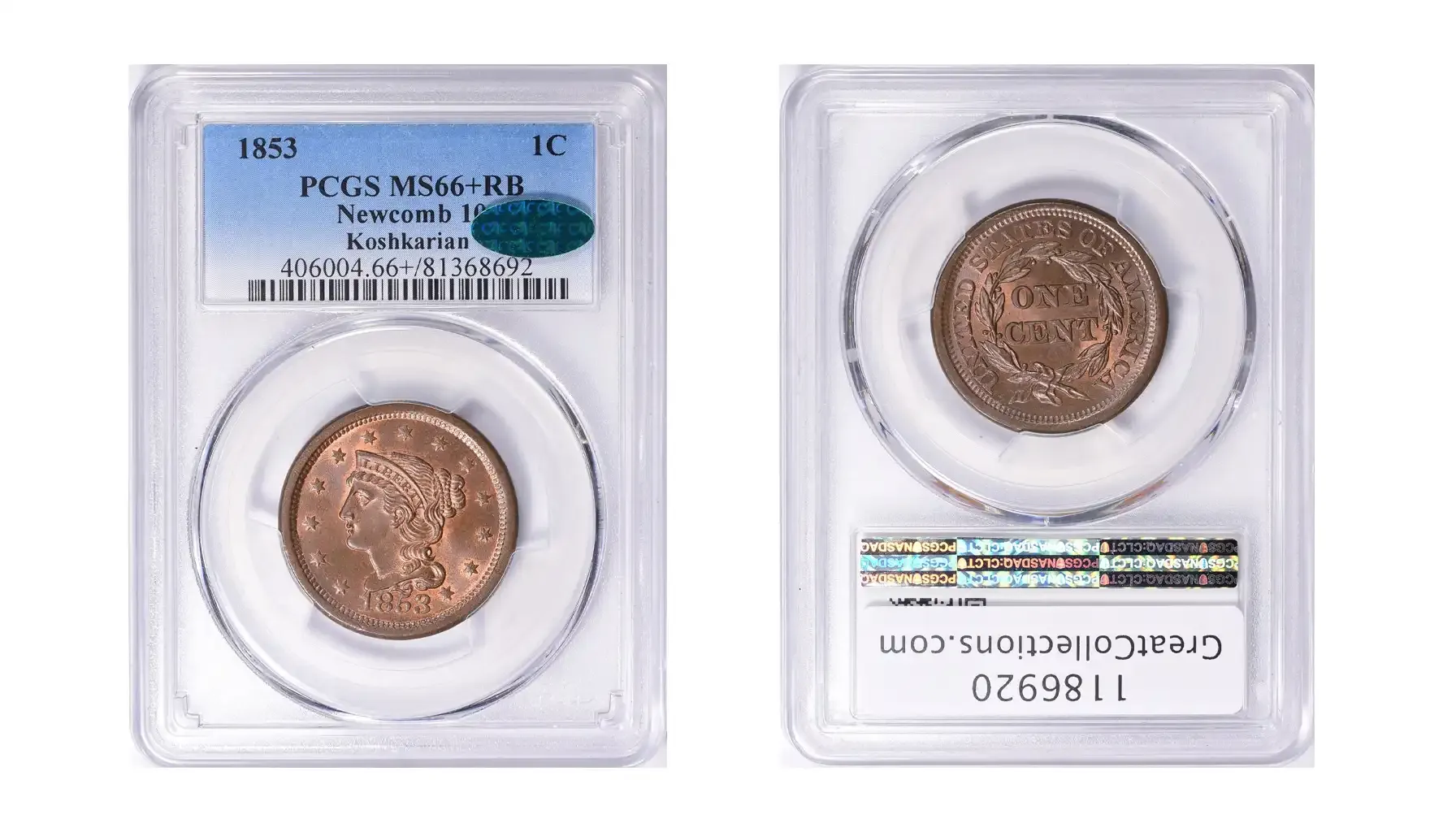
1802/0 Draped Bust 1/2C Reverse of 1802
Winning bid: $4,908
Grade: F-15 BN
The 1802/0 Draped Bust 1/2 C is a rare variety, with the "Reverse of 1802" showcasing an interesting minting error. Errors on half cents are valuable, and they get even more expensive over time.
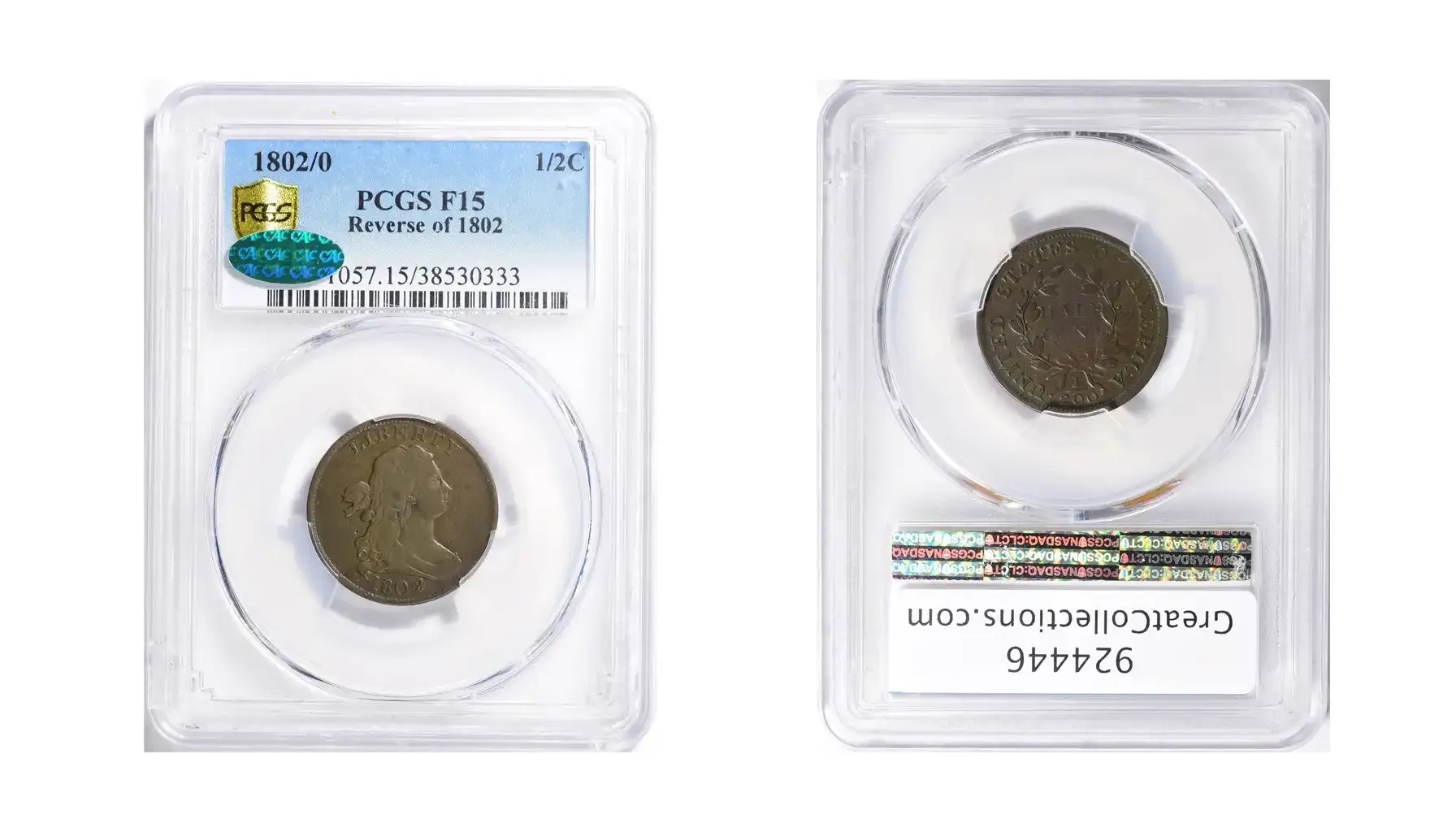
1804 Draped Bust 1/2C, Spiked Chin
Winning bid: $215
Grade: VF-35 BN
This variety of the 1804 Draped Bust 1/2C features a distinct "spiked chin" error, making it a unique and highly collectible piece. And indeed, this production flaw attracts both error coin enthusiasts and general collectors.
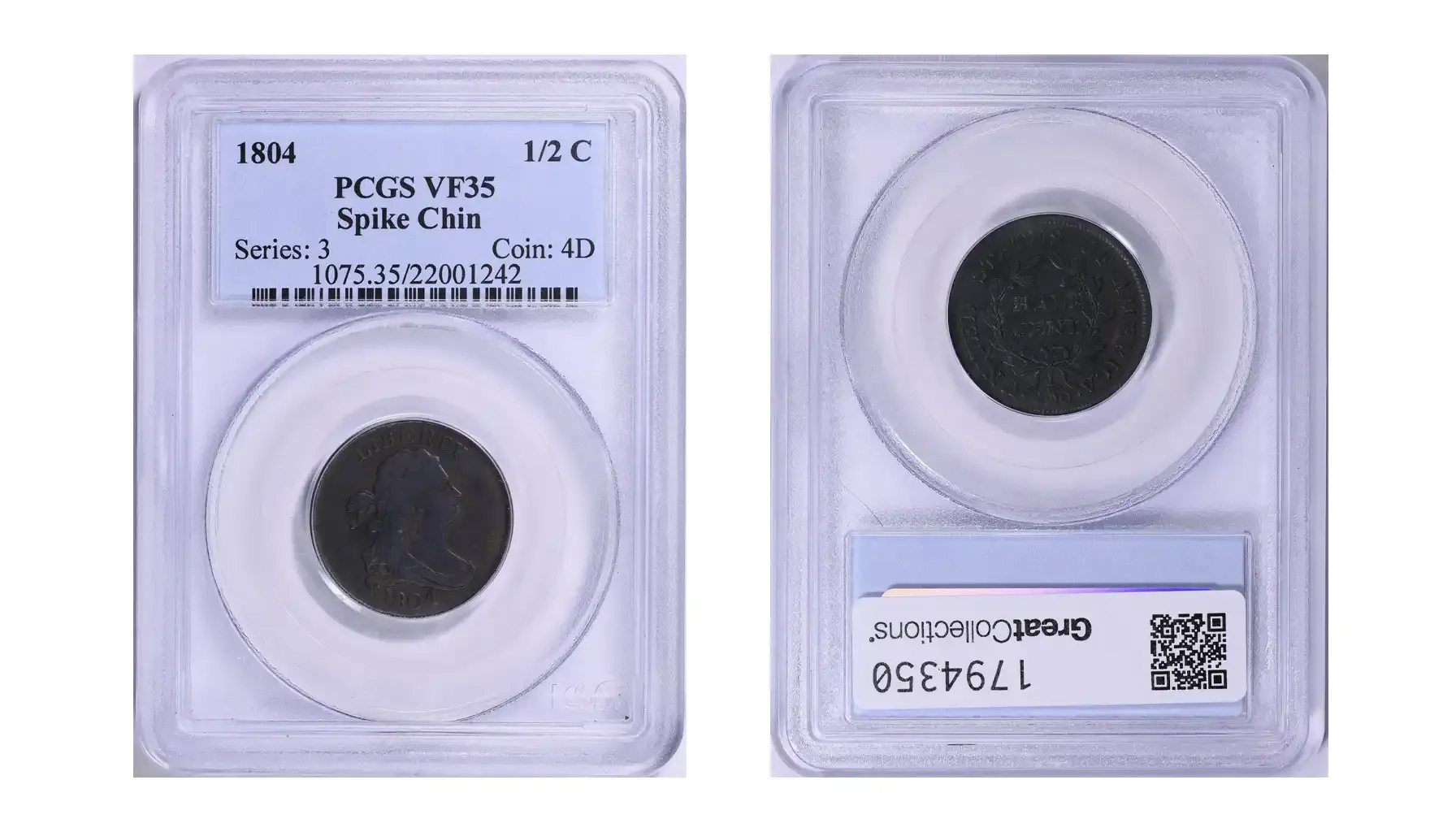
1808 Draped Bust 1/2C Rotated Dies
Winning bid: $45
Grade: G-06 BN
The 1808 Draped Bust 1/2C with rotated dies is an interesting error coin, showcasing a minting anomaly. Perfection is not always so desirable.
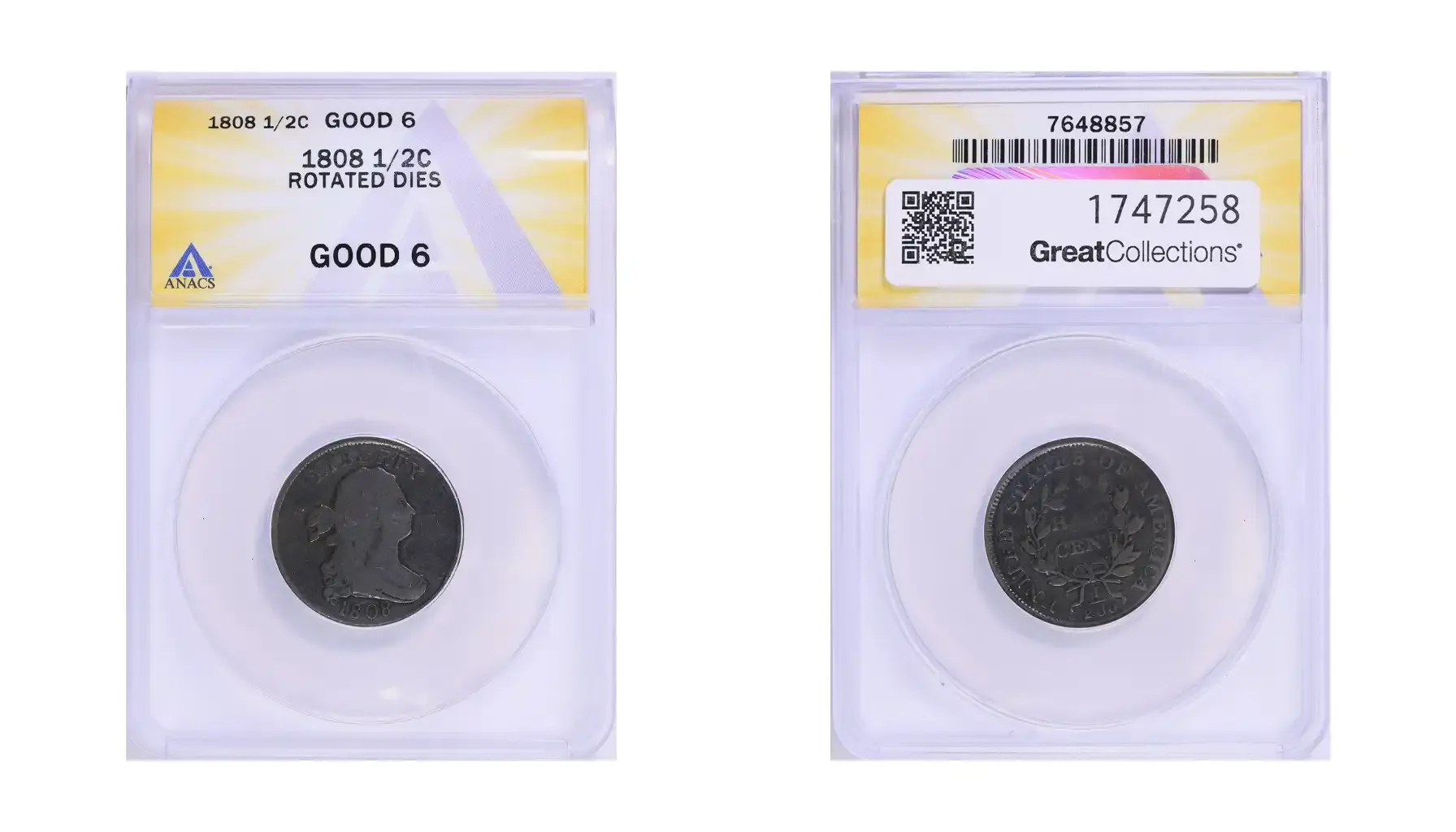
Compile the Finest Collection, But Routine Kills the Vibe…
For numismatists of all levels, a fine collection might be both a goal and a dream, depending on its composition, values, and size as well. All in all, the process of collecting particular items may be challenging and daunting, even for those who are enthusiastic about this endeavor without any doubt. These half cent coins indeed provide a great opportunity for collectors to compile a unique and valuable set, but the means employed on this path also matter.
So as to break out of these routine tasks that may potentially diminish the thrill of the hunt, we recommend that you rely on external resources like Coin ID Scanner that grant an amusing experience with professional tips, essential information, captivating features, and more. Coin ID Scanner, for example, is known for its innovative features in the sphere of AI coin identifiers, i.e., the app may easily identify a coin and its defects, assess the value, and provide 24/7 numismatic support for those who need it all the time.
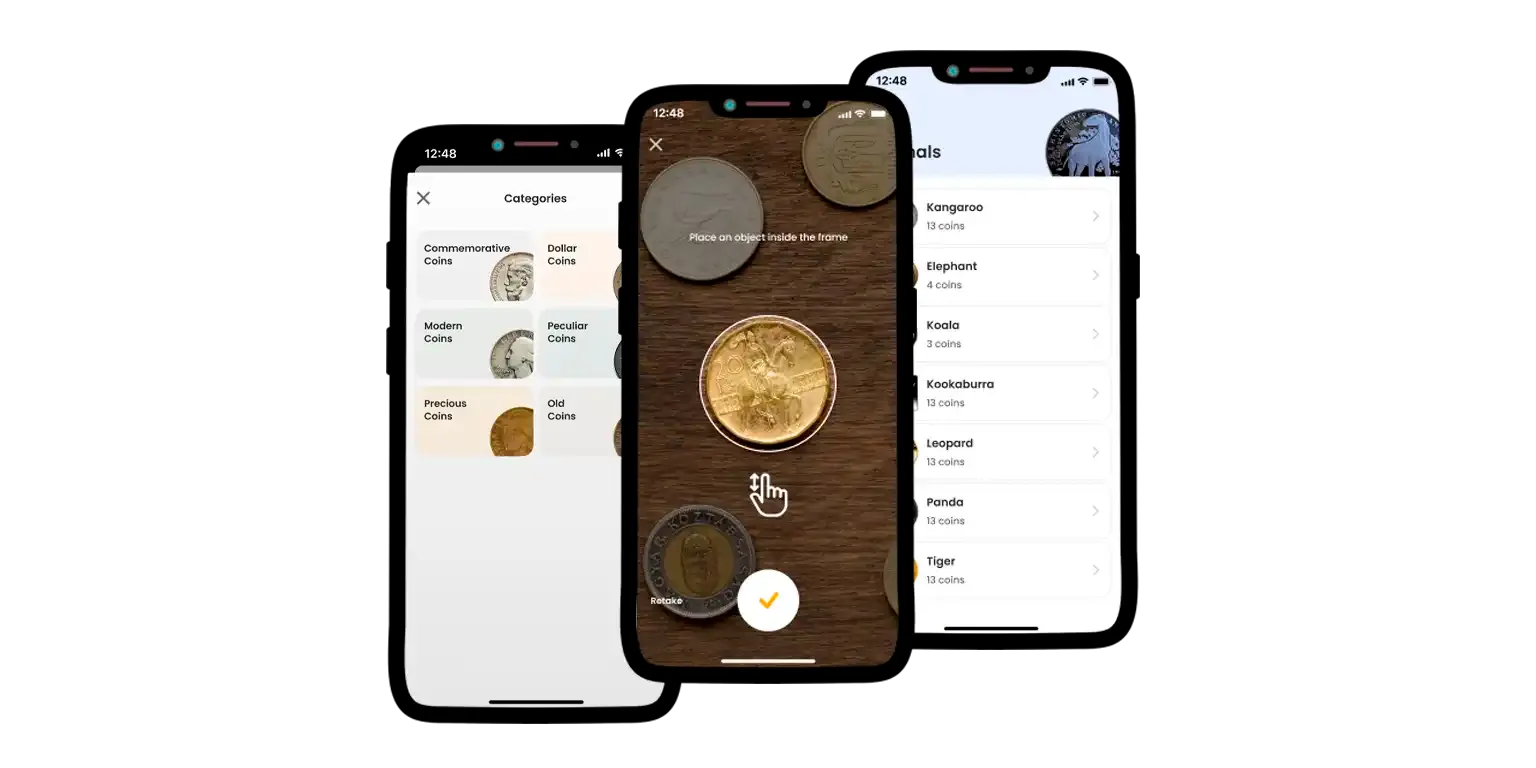
Keep your passion alive and let your hobby be full of creative aspirations and curiosity.



